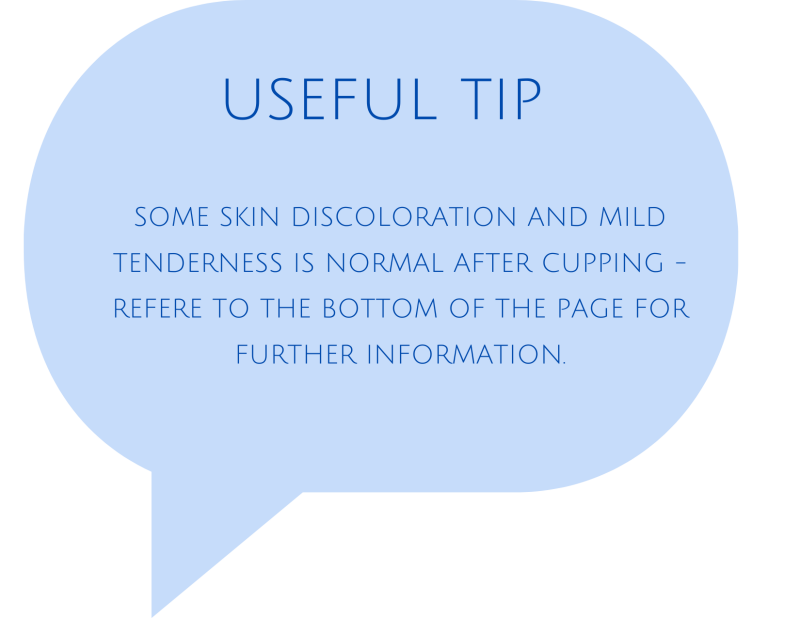Cupping
What is cupping?
Cupping therapy is a form of alternative medicine in which a local suction is created on the skin with the application of cups.
Cups have been used in healing in many countries for hundreds of years. In China cupping is an integral part of Chinese Medicine and it dates back 5000 years.It is used as a therapy on its own or in conjunction with acupuncture, moxibustion and massage. Chinese cupping is the "art of ‘Creating Space’ between the surface of the body and deep tissue layers to allow blood, fluids and Qi to flow freely".
When used in conjunction with Western medicine, cupping is used to activate the immune and lymphatic systems. Cups act as a vacuum (negative pressure), pulling blood into dehydrated, malnourished or ischemic (deficient in blood) tissues.
Effects of cupping technique on a body
- warming and promoting free flow of blood and lymphatic
- reducing congestion and stagnation from muscles, joints, organs
- relieving oedema
- removing metabolic waste(e.g. lactic acid), toxins, old blood deposits from old injury or surgery
- alleviating adhesions (adhesions are any two anatomical surfaces stuck or growing together that do not naturally connect, usually due to injury or inflammation. This can occur within muscles, connective tissue, visceral organs
- ‘breaking up’ and softening of a scar tissue
- lifting, rehydrating and manipulating fascia (form of connective tissue that envelops all muscle tissues, interlocking throughout all structures of anatomy, and contributes to maintaining structural integrity of the entire body)
- desensitizing superficial pain patterns
- supporting body temperature regulation
- promoting relaxation; non aggressive cupping has a calming, relaxing effect on entire central nervous system due to its relaxing effect on all sensory receptors
- promoting lengthening of tight muscle; cupping can lift and stretch the tissue rather than press on it, which stimulates relaxation response
what conditions can be treated with cupping?
- back, neck and shoulder pain
- frozen shoulder
- tennis/golfers elbow
- carpal tunnel syndrome
- sciatica
- IT band restrictions
- plantar fasciitis
contraindications of cupping
- open wounds, ulcers
- deep vein thrombosis(DVT)
- contagious skin conditions (chicken pox, herpes blisters) or topical irritants( poison ivy, unknown rash)
- not to be applied over varicose veins
- high fever or convulsion
Possible side-effects post cupping:
- localised temporary skin discolouration (not bruise)
- tiredness
- temporary increased local tenderness
- increased bowel movement, coughing or menstrual flow
Is it normal to have marks after cupping?
Varying degrees of skin discolouration may occur during cupping, however they are not bruises; they can be sensitive to touch for a while but they should never be painful. The amount of discolouration and the length of time it lasts( usually 5-7 days) is a direct indication of the amount of congestion in the tissues. While the discolouration remains the body is still clearing. The skin can be:
Light red or pink speckling: New, more superficial stagnations and restrictions, can also indicate an acute condition, recent injury
Dark red or purple: Older, deeper stagnation, this colour can indicate a site of surgery, an intense illness or a long term stressor or an old injury, such as deep bruise from falling
Purple, raised: thicker material, old blood deposits




